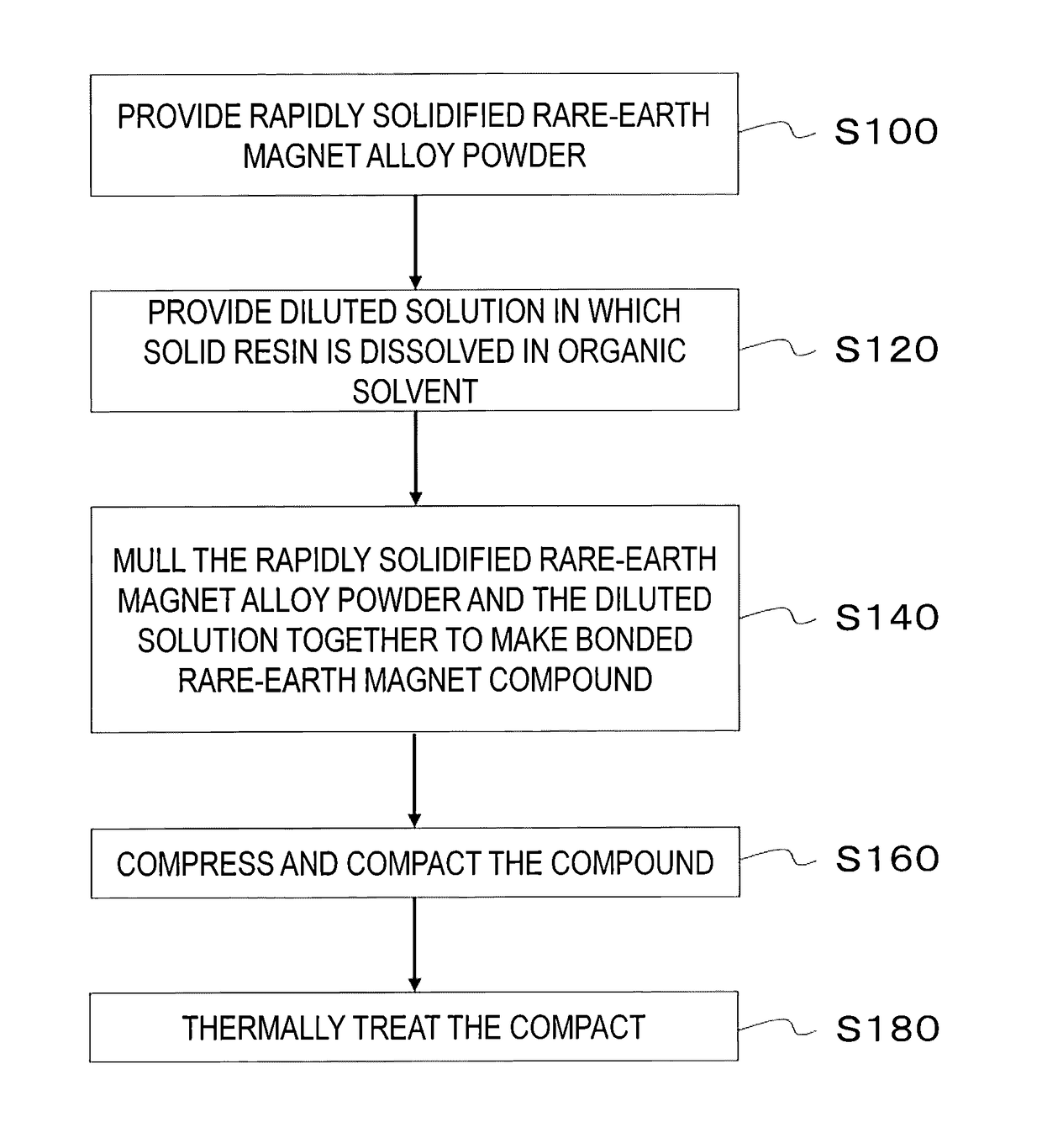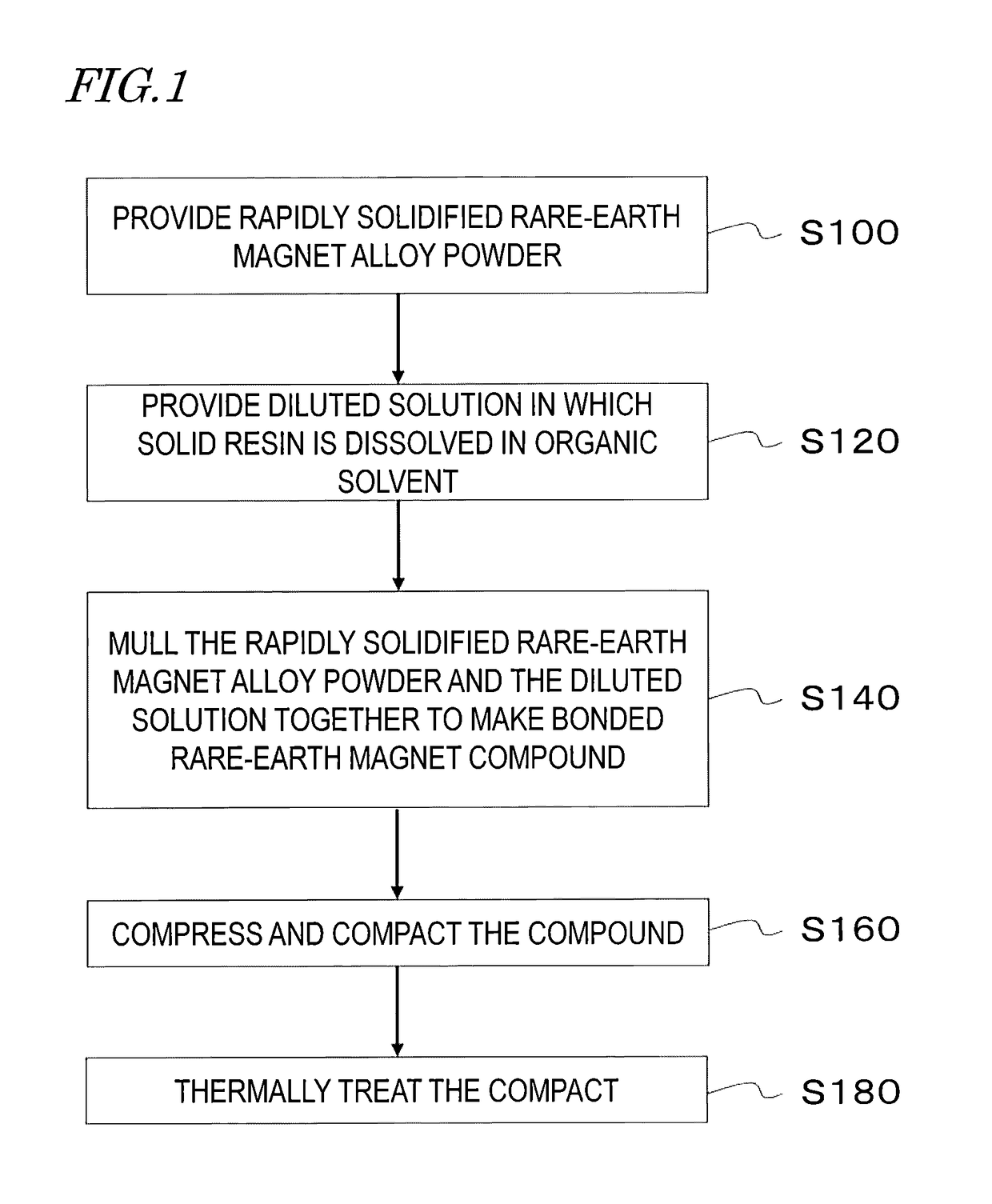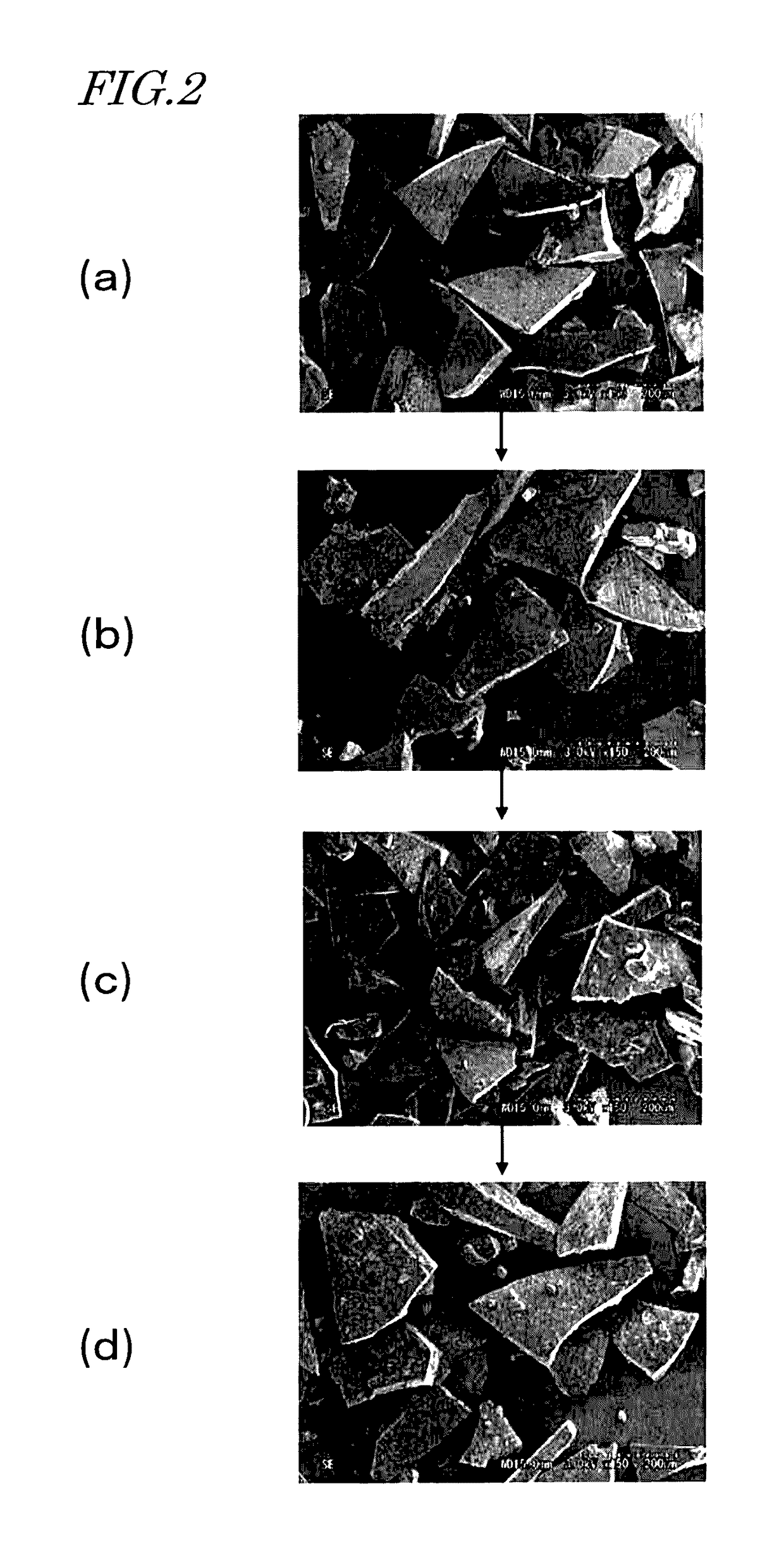Rare-earth bond magnet manufacturing method
a manufacturing method and rare earth bond technology, applied in the direction of manufacturing tools, magnetic bodies, soldering devices, etc., can solve the problems of low electrical resistance, inability to achieve practical mechanical strength, inability to achieve magnet density, etc., to achieve excellent magnetic properties, high magnet density, and high electrical resistance.
- Summary
- Abstract
- Description
- Claims
- Application Information
AI Technical Summary
Benefits of technology
Problems solved by technology
Method used
Image
Examples
example 1
[0067]As a magnet powder, a Ti including nanocomposite magnet powder was prepared by pulverizing and thermally treating a rapidly solidified alloy ribbon that had been obtained by melt spinning process to have the composition Nd8.6Pr0.1Fe84.4B6.0Ti0.9 (in atomic percentages). The magnet powder was then classified using a sieve. As a result, its 50 mass % particle size fell within the range of 75 μm to 105 μm.
[0068]Supposing the mass of the magnet powder to mull was 100 mass %, a resin (such as bisphenol A epoxy resin) and a curing agent (which accounted for 5 mass % with respect to the epoxy resin), of which the mass percentage was defined by the “amount of resin” in Table 1, were provided and then dissolved in methyl ethyl ketone (MEK) to obtain a solution. The percentage of the methyl ethyl ketone was defined by the mass percentage which is represented as “MEK percentage” in Table 1 with respect to the mass of the magnet powder to mull.
[0069]Subsequently, this solution and the mag...
example 2
[0081]A single-phase melt-quenched magnet powder produced by Magnequench international, Inc. was provided as the magnet powder and a compound and a compact were made as Sample No. 17 under the same condition as in Sample No. 13 of EXAMPLE 1. This single-phase melt-quenched magnet powder had the composition Nd12Fe77B5Co6 (in atomic percentages) and had a mean particle size (i.e., a 50 mass % particle size obtained by classification with a sieve) of 90 μm. The bonded magnet thus obtained had a density of 6.5 g / cm3, a radial crushing strength of 36 MPa, an electrical resistance of 2000 μΩ·cm, all of which were equal to or greater than their required values.
example 3
[0082]Compounds and compacts were made under the same condition as Samples Nos. 1, 7, 8, 11, 12, 13 and 17 of EXAMPLES 1 and 2. Their conditions are summarized in the following Table 3. Magnet powders A and B were the same as the one used in EXAMPLE 1 and the one used in EXAMPLE 2, respectively
[0083]
TABLE 3PercentagePercentageof MEK toCompactingSampleMagnetof resinmagnet powderpressureNo.powder[mass %][mass %][MPa]1A2.01.8%980Cmp. Ex.7A1.01.2%1470Example8A1.01.2%1960Example11A0.51.8%1960Example12A0.51.2%1470Example13A0.51.2%1960Example17B0.51.2%1960Example
[0084]These compacts were subjected to a barrel process for three minutes using an SUS medium in a vibrating barrel (CCL-50SB manufactured by Tipton Corporation). The respective surfaces of the sample magnets Nos. 1 and 11 that had been subjected to the barrel process were observed through a scanning, electron microscope (SEM). The photographs thus obtained are shown in FIGS. 7(a) and 7(b). The present inventors discovered that on ...
PUM
| Property | Measurement | Unit |
|---|---|---|
| particle size | aaaaa | aaaaa |
| pressure | aaaaa | aaaaa |
| density | aaaaa | aaaaa |
Abstract
Description
Claims
Application Information
 Login to View More
Login to View More - R&D
- Intellectual Property
- Life Sciences
- Materials
- Tech Scout
- Unparalleled Data Quality
- Higher Quality Content
- 60% Fewer Hallucinations
Browse by: Latest US Patents, China's latest patents, Technical Efficacy Thesaurus, Application Domain, Technology Topic, Popular Technical Reports.
© 2025 PatSnap. All rights reserved.Legal|Privacy policy|Modern Slavery Act Transparency Statement|Sitemap|About US| Contact US: help@patsnap.com



